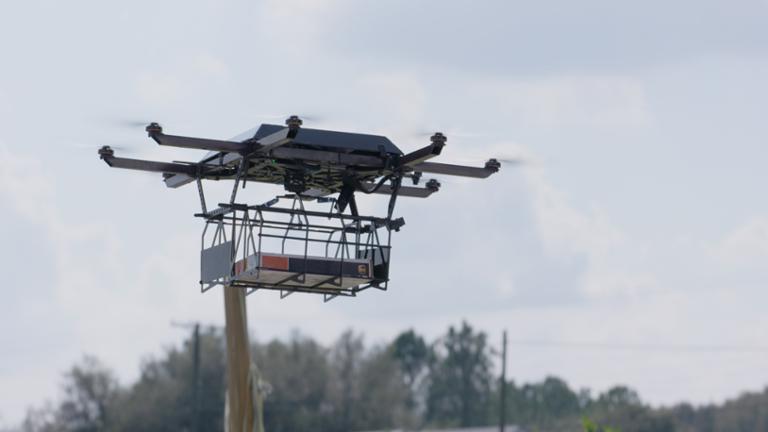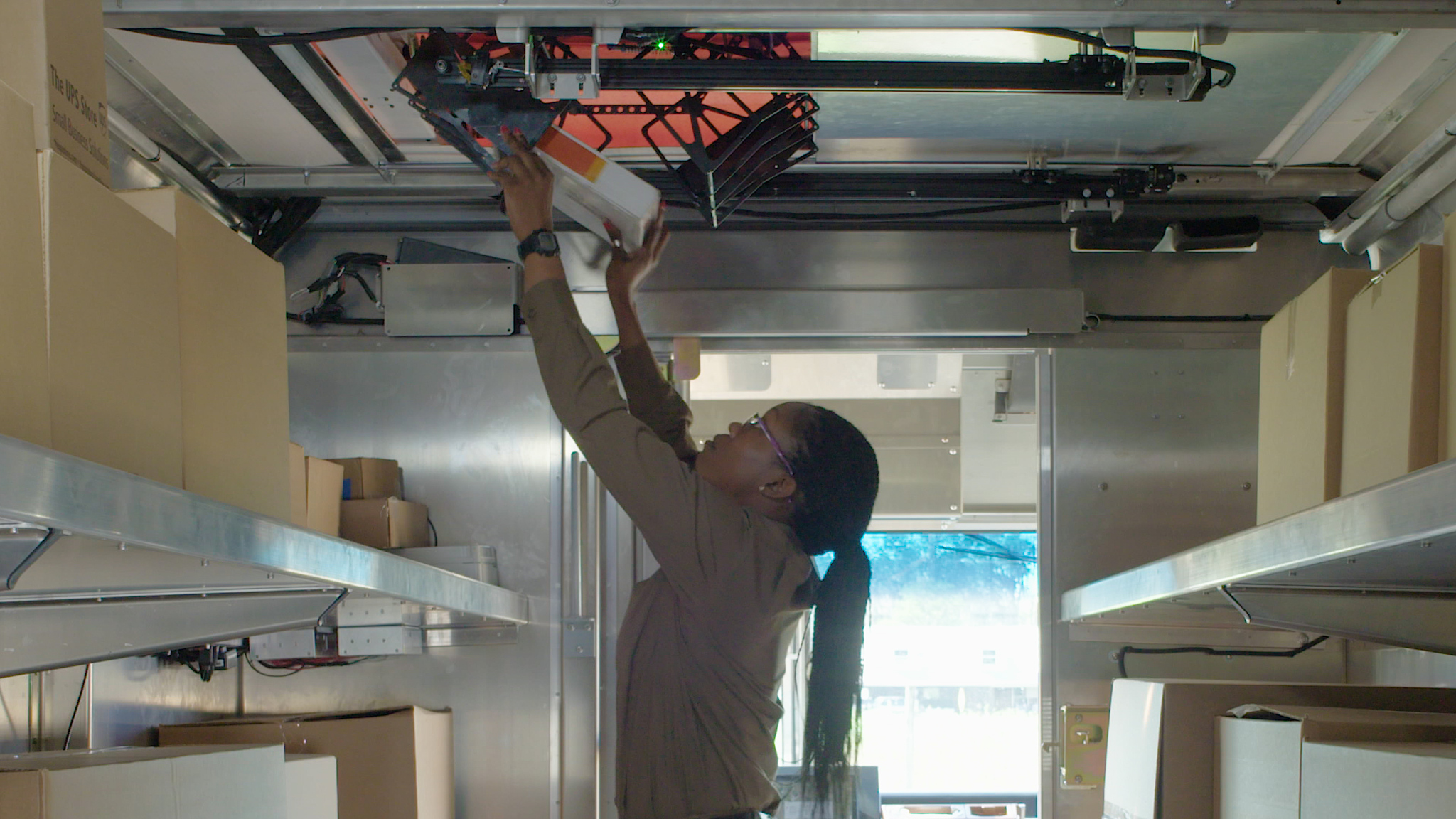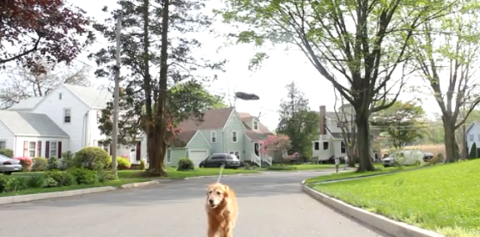
[caption id="attachment_140087" align="aligncenter" width="2048"]  UPS drones aren't perfect. Credit: TechCrunch[/caption] UPS has launched a new aerial drone concept, built to deliver small packages. The company says the ‘HorseFly’ drones, deployed by trucks, won’t replace drivers, and its recent demo showed why that’s true. Showing off its new concept to reporters, UPS tried to launch HorseFly from a specially-equipped all-electric truck. The drone has a basket that splits down the center to unload the parcel at your doorstep. The demo drone's first pass was a complete success; the package was delivered as planned, and the drone returned to the truck, where a pair of mechanical arms pulled it back to its rooftop docking station. A second try didn’t go so well. From TechCrunch:
UPS drones aren't perfect. Credit: TechCrunch[/caption] UPS has launched a new aerial drone concept, built to deliver small packages. The company says the ‘HorseFly’ drones, deployed by trucks, won’t replace drivers, and its recent demo showed why that’s true. Showing off its new concept to reporters, UPS tried to launch HorseFly from a specially-equipped all-electric truck. The drone has a basket that splits down the center to unload the parcel at your doorstep. The demo drone's first pass was a complete success; the package was delivered as planned, and the drone returned to the truck, where a pair of mechanical arms pulled it back to its rooftop docking station. A second try didn’t go so well. From TechCrunch:
During a second, unofficial demonstration of the HorseFly for UPS on Monday, some sort of interference – possibly from the broadcast reporters’ cameras - caused an issue with the drone’s compass. The drone aborted its launch, tried to land on top of the UPS truck, fell to the side and was nearly crushed by the still-closing lid of the vehicle.
Whoops. Workhorse, a drone-building tech firm that partnered with UPS for this project, says it’s never seen its drones do such a thing, lending credence to the idea that this was a one-off incident. The truck/drone combo is still a work in progress, and Workhorse CEO Steve Burns suggested the hardest part of the process is getting the drones to come home. “The toughest thing, technically, is having the HorseFly drone re-mate with the electric truck,” he said. “There’s a small portal… we basically have to have a robotics system up on the top that grabs it, picks it up, and puts it in the hole.” [caption id="attachment_140088" align="aligncenter" width="2048"]  UPS driver loading drone for delivery credit: TechCrunch[/caption]
UPS driver loading drone for delivery credit: TechCrunch[/caption]
Drones Can’t Do Every Job
The random failure demonstrates yet again that drones are not quite ready for prime time – or even Prime. Amazon has been working in earnest on drone deliveries for Prime members, though it’s still trying to nail down the specifics of how that will be accomplished. Its latest idea is parachutes for packages, dropped from drones. Yes, really. Alphabet has also shelved its plan for drone deliveries, though it was never clear how far beyond skunkworks the company was willing to take its technology. UPS wants to use drones for country-dwelling folk. Rather than have drivers traipse around rural areas, the company thinks turning its trucks into mobile-drone deployment basecamps is the right move. It makes sense, too; a driver could park strategically between several drop-off points, then work from the back of the truck to deploy drone deliveries to homes in the area. While UPS and Workhorse have built a singular experience for drones and trucks, its easy to imagine how the concept could scale for multiple drones per truck to make drivers more efficient. It won’t solve for ‘x’ when it comes to larger packages, but that whisk Grandma bought online may arrive via the air. It also doesn't appear that drones will challenge our job security anytime soon. If anything, the long-term implications hint at the need for a human operator at the center of all drone activity. Even if trucks become autonomous and drones deliver packages, a human will need to be around to manage the process. This is a point underscored by the FAA’s reluctance to simply let tech companies like Amazon deliver via drone. A lot still has to be worked out, and if even UPS drones fail because of random radio interference in an open field, what else may trip them up? A lot more testing is required before we see these machines in widespread use. But companies will keep working on this initiative nonetheless. As UPS Vice President of Engineering John Dodero said: “We have to be competitive. All we’re doing here is eliminating miles the driver could potentially have to drive. Our goal is not to replace UPS drivers…we just want to enhance their capabilities and make them more efficient. “UPS drivers are the face of the organization,” Dodero added. “Customers depend on them.” But at least at the moment, customers can't depend on drones.


